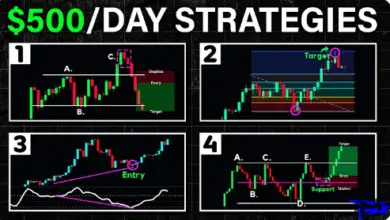Understanding Stock Market Trends and Predictions in 2024-mobileprice
Understanding Stock Market Trends and Predictions in 2024-mobileprice

The stock market is constantly evolving, and understanding its movements is crucial for anyone looking to invest wisely. Whether you are new to investing or have been trading for years, grasping the concept of stock market trends and predictions can give you a significant edge. In this article, we’ll break down the essential trends, how to predict them, and what tools to use in 2024 to stay ahead of the curve.
What Are Stock Market Trends?
At its core, a stock market trend is the general direction in which prices are moving. The market can be classified into three primary types of trends: uptrends, downtrends, and sideways trends. Recognizing which trend the market is following can help investors make informed decisions.
-
Uptrend (Bull Market)
- When stock prices are consistently rising over time, the market is said to be in an uptrend or a “bull market.” Investor optimism, strong economic performance, and positive corporate earnings often drive these uptrends. A bull market can last for months or even years, offering opportunities for investors to earn profits as stock prices increase.
- Downtrend (Bear Market): Conversely, a downtrend, or “bear market,” occurs when stock prices consistently fall. This often happens due to economic slowdown, negative news, or investor panic. In such a market, there is generally widespread pessimism, and selling pressure outweighs buying demand. Bear markets can be challenging for investors, but they also present opportunities for those who know how to spot value in declining stocks.
- Sideways Trend (Neutral Market): Sometimes, the market doesn’t move strongly in either direction. In a sideways or neutral trend, stock prices fluctuate within a narrow range, and there’s no clear indication of whether the market is heading up or down. This kind of market can be frustrating for investors looking for rapid gains, but it can also offer opportunities for those focused on short-term trading or value investing.
Phases of a Market Trend
Market trends don’t happen overnight. They go through distinct phases, which can help investors identify potential buying or selling opportunities:
- Accumulation Phase: This phase occurs after a market downturn. In this stage, informed and experienced investors begin buying stocks in anticipation of an upcoming rally. During the accumulation phase, the market may still seem uncertain or weak, but savvy investors start positioning themselves for the next trend.
- Advancement Phase: In this phase, prices start to rise as the broader market sentiment becomes more positive. Positive news, strong earnings reports, or improvements in economic indicators can all contribute to a surge in stock prices. As prices continue to increase, more investors join the rally, driving prices even higher.
- Distribution Phase: As prices reach their peak, many investors begin to take profits by selling their holdings. This phase can be tricky because it may be difficult to tell when the market has peaked. However, once the selling pressure increases, the market begins to shift toward the decline phase.
- Decline Phase: In this phase, the market starts to fall due to an oversupply of stocks being sold. Economic concerns, negative news, or a shift in investor sentiment typically drive the market down. Investors may start to panic-sell, and the cycle begins anew with the accumulation phase.
How to Identify Stock Market Trends
To effectively predict and react to market trends, it’s essential to use the right tools and strategies. There are two primary methods for identifying market trends: technical analysis and fundamental analysis.
Technical Analysis: The Power of Charts and Data
Technical analysis involves studying historical price movements and trading volumes to predict where the market is headed. By analyzing charts, patterns, and various indicators, traders can gain insight into the market’s future direction. Some of the key technical analysis tools include:
- Moving Averages: Moving averages smooth out price data to identify trends. There are two types of moving averages: simple moving averages (SMA) and exponential moving averages (EMA). These tools help determine whether the market is in an uptrend or downtrend by showing the average price over a specified period.
- Relative Strength Index (RSI): RSI is a momentum oscillator that measures the speed and change of price movements. It helps identify whether a stock is overbought or oversold, which can signal potential price reversals. A stock with an RSI above 70 is considered overbought, while one with an RSI below 30 is considered oversold.
- MACD (Moving Average Convergence Divergence): This is a momentum indicator that shows changes in the strength, direction, and duration of a trend. MACD helps identify potential buy and sell signals by looking at the relationship between two moving averages.
- Volume Analysis: Volume is a key indicator of the strength of a trend. A price increase with high trading volume suggests that the trend is likely to continue, while a price increase with low volume may indicate that the trend is weak or about to reverse.
By using these and other technical indicators, traders can make educated predictions about where the market is headed.
Fundamental Analysis: Beyond the Charts
While technical analysis focuses on price and volume, fundamental analysis looks at the underlying factors that affect a stock’s value. This includes a company’s financial health, its earnings reports, economic indicators, and other macroeconomic factors. In 2024, fundamental analysis is especially important, given the ongoing economic uncertainty. Some key aspects to focus on include:
- Company Earnings Reports: Earnings reports are one of the most reliable indicators of a company’s financial health. Strong earnings often lead to rising stock prices, while poor earnings results can drive prices lower. Investors should pay attention to revenue growth, profit margins, and earnings per share (EPS).
- Economic Indicators: The broader economic environment has a significant impact on stock market trends. Key indicators such as GDP growth, inflation rates, unemployment levels, and consumer spending can all influence market movements. In 2024, inflation and interest rates are likely to play a significant role in shaping market trends.
- Interest Rates: Interest rates set by central banks, like the U.S. Federal Reserve, can influence the cost of borrowing and, in turn, affect stock prices. Higher interest rates tend to slow down economic growth, which can lead to lower stock prices. On the other hand, lower interest rates encourage borrowing and spending, which can boost stock prices.
- Sector Performance: Not all sectors of the economy perform the same way. In 2024, sectors like technology, healthcare, and renewable energy are expected to see growth, while others like energy and finance may experience volatility. Investors who understand the dynamics of different sectors can better predict how specific stocks or industries will perform.
Predicting Stock Market Trends in 2024
Although it’s impossible to predict stock market trends with absolute certainty, there are tools and strategies that can help investors make educated guesses. In 2024, several factors are likely to influence market movements:
- Inflation and Interest Rates: Central banks around the world are expected to keep interest rates higher for most of 2024 to combat inflation. This could lead to slower economic growth, potentially affecting stock prices. However, certain sectors like technology and renewable energy may still see growth despite a challenging economic backdrop.
- Geopolitical Events: The geopolitical landscape remains uncertain, with ongoing tensions between countries, including the Russia-Ukraine war and trade conflicts between major economies like the U.S. and China. These events can create volatility in the stock market, causing sharp price movements.
- Technological Innovation: As technological advancements continue to reshape industries, certain stocks—particularly those in tech and innovation—are expected to perform well in 2024. Companies involved in artificial intelligence, green energy, and biotechnology could see significant gains.
- Investor Sentiment: The collective mood of investors can significantly impact market trends. In 2024, sentiment may be influenced by factors such as economic data, corporate earnings reports, and geopolitical risks. Sentiment analysis tools, which use artificial intelligence to gauge the mood of investors through social media and news reports, are becoming increasingly popular among traders.
Tools and Resources for Predicting Stock Market Trends
In 2024, investors have access to a variety of tools and resources that can help them predict market trends. Stock screeners like Yahoo Finance and MarketWatch can help you identify stocks based on technical and fundamental criteria. Economic calendars, such as those found on Investing.com, allow you to stay updated on key economic events that may impact the market.
For those looking for more advanced tools, AI-driven platforms like AlphaSense and Kavout analyze large amounts of data to provide insights into market sentiment and trends.
Practical Tips for Investing in 2024
Here are some practical tips for navigating the stock market in 2024:
- Stay Informed: Keep up with economic data, interest rate changes, and global news. These factors will continue to shape market trends in 2024.
- Diversify Your Portfolio: Spread your investments across different sectors and asset classes to reduce risk. Diversification can help protect your portfolio from unexpected market movements.
- Focus on Long-Term Goals: While short-term market fluctuations can be tempting, long-term investments are more likely to yield better returns. Stay focused on your financial goals and avoid being swayed by daily market noise.
- Use AI Tools: Leverage AI-powered tools to stay ahead of the curve. These tools can analyze vast amounts of data and provide you with valuable insights into market sentiment and future trends.




